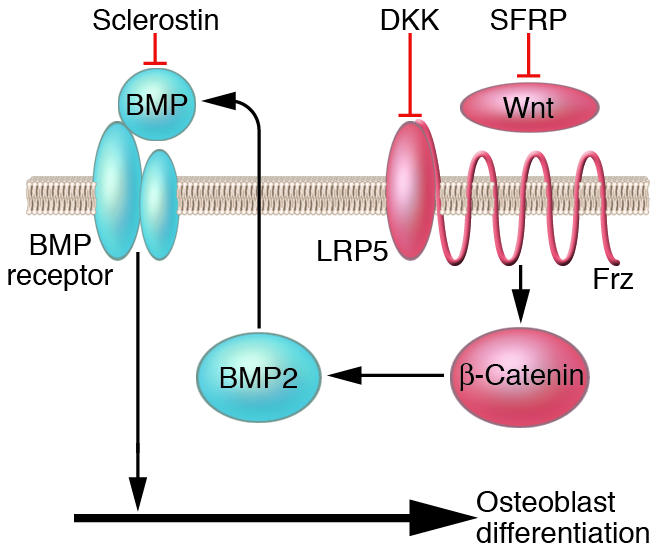Figure 3.

Interaction of the Wnt, BMP, and sclerostin pathways. Differentiation of osteoblasts during both development and remodeling is dependent on the activity of both the Wnt and BMP pathways. Wnt signaling requires the interaction of the LRP5 and frizzled receptors (Frz) and can be inhibited by Dickkopf (DKK; an inhibitor of LRP5) and secreted frizzled-related protein (SFRP). Antagonists such as sclerostin can block both BMP and Wnt signaling. The mediator of the canonical Wnt pathway, β-catenin, can synergize with BMP2 to enhance osteoblast differentiation and bone formation. Consistent with these interactions are the findings that high bone mass can result both from activating mutations of the Wnt pathway and deletion of SOST, the gene encoding sclerostin.
